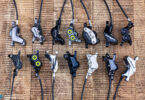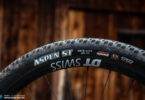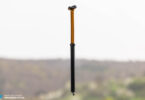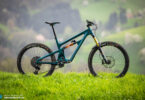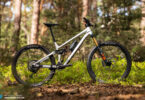There’s more to being a pro rider than simply giving it 100% between the tape. Especially if you ride for Trek Factory Racing, where their elite racers play an essential role in product development. We gained exclusive behind the scenes access to a quiet Trek Factory Racing test session in the Scottish Borders.
When it comes to putting products through their paces, no challenge is more gruelling than putting them under the fastest riders in the world. It’s a fact, top elite racers can generate forces and reach speeds that the rest of can only dream of – if it works for them, then it will most definitely work for us. Trek Factory Racing have been using their race teams to test prototypes for many years, and we were invited to see how it works. Ray Waxham, Trek’s Race Team Technical Liaison, had flown from Wisconsin to the UK, complete with some exciting luggage. He was here to work with Trek’s latest hot-shot signing, Lewis Buchanan, to push some top secret products to the limit on his home trails.
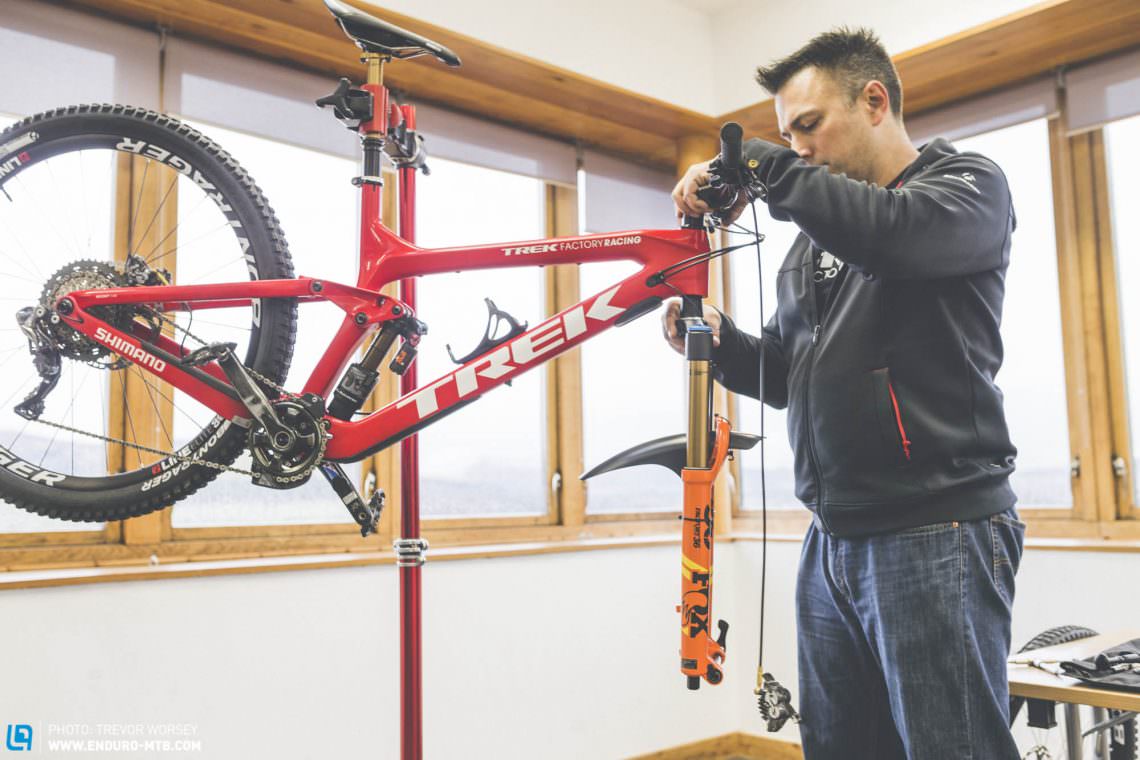
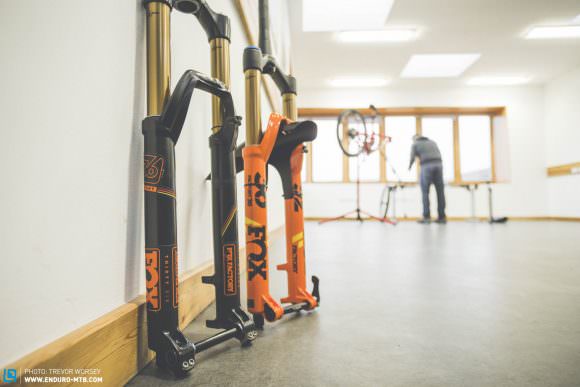
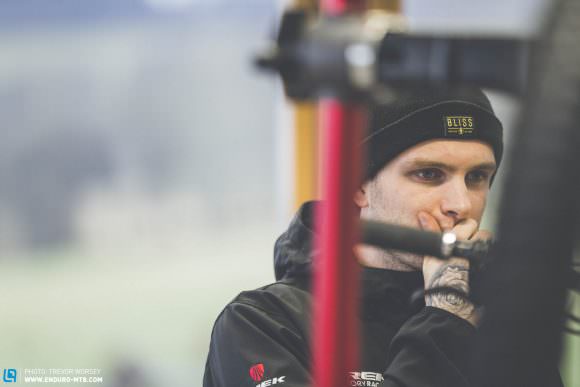
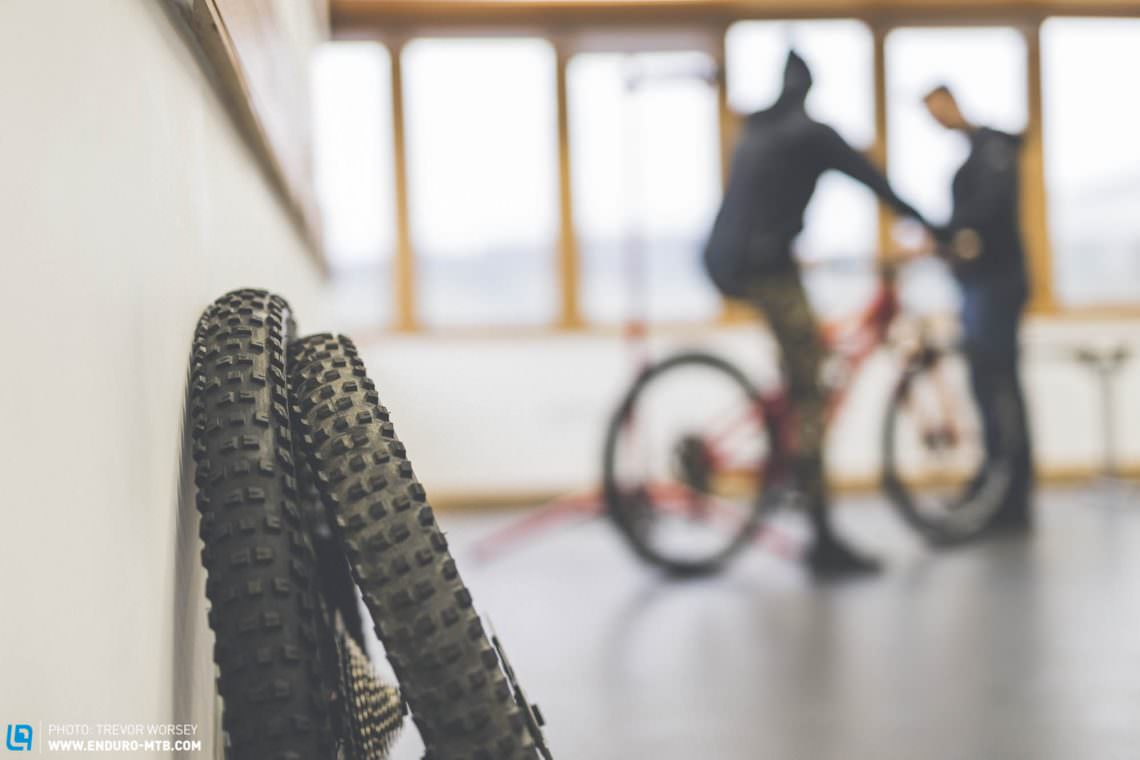
As much as we would love to think so, we don’t ride the same as the fastest riders in the world, so how does their feedback help us. Ray was quick to explain, “Everything the race team is doing is an accelerated version of what the public will do in the end, in a single month we’ve seen levels of wear that we would take a normal rider years, trashed bearings, fatigued and broken parts, the team simply push the bikes faster and harder into things. Also, the race team’s feedback is unbiased, probably helped by the fact that they did not have to drop ten grand on their bikes. We don’t ever want to be the reason for slowing a rider down, having the fastest riders in the world test on the hardest terrain in the world is invaluable, it’s a process we could never replicate in a lab. If it works for them it will work for everyone.”
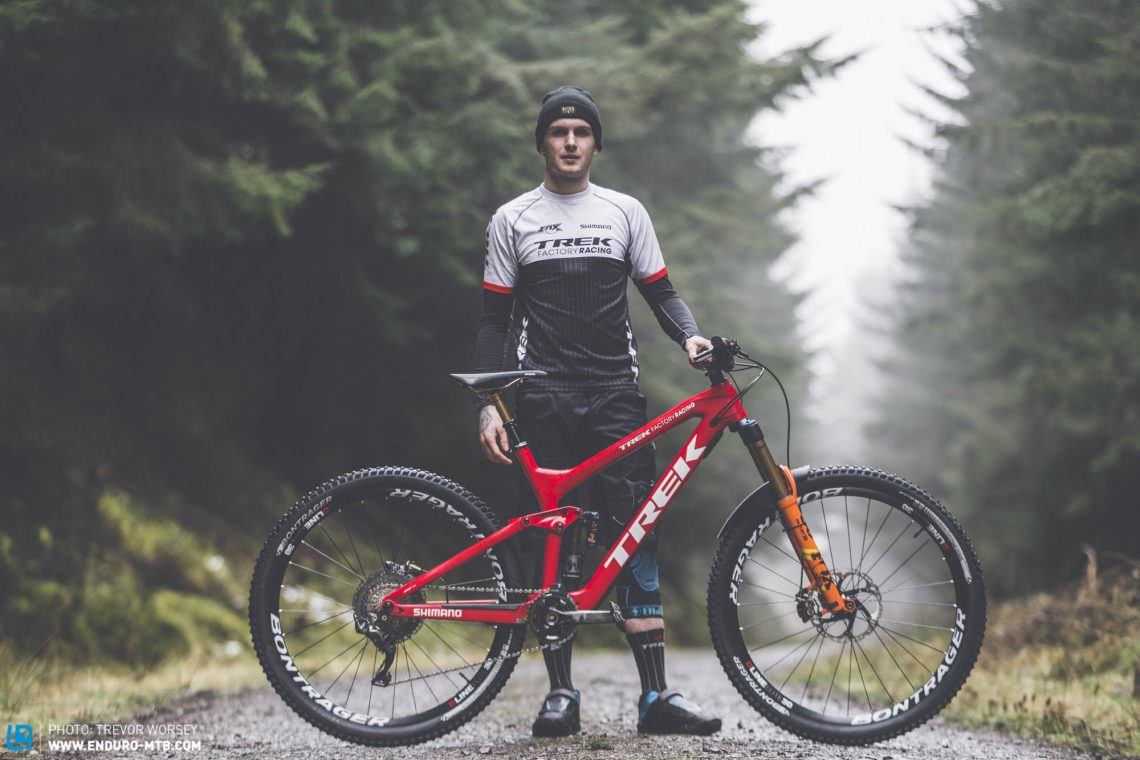

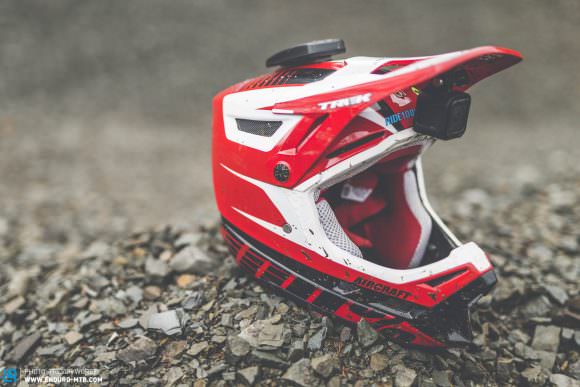

Trek hold these small prototype testing sessions all over the world, and as Ray tried to power through his jet-lag with huge amounts of coffee, he let us into what he had brought over. Not only did he have a top secret new FOX 36 suspension fork, which we will be able to tell you more about very soon, but he also had some new Bontrager Line Elite 30 wheels and prototype wider Team Issue tires for testing. This was to be a quiet test, in order to maintain a low profile there would be no branded banners or huge liveried race trucks, just an innocuous EZE-UP, an uplift van some great trails and, oh yes, some very cutting edge analytical tools.


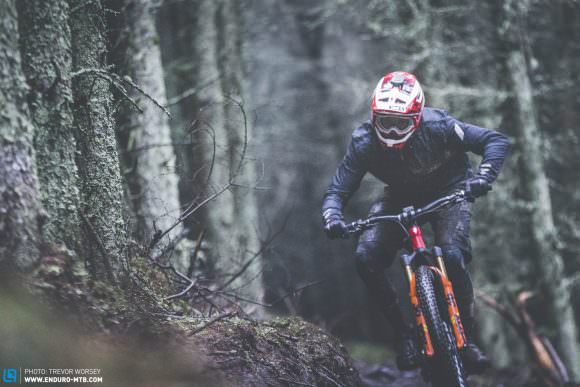

Secret Products
If you want to find out what’s coming from Trek, then the Trek Factory Racing team is the best place to see into the future. Here are three products, hot of the press that were being put through their paces on the tough Scottish trails.
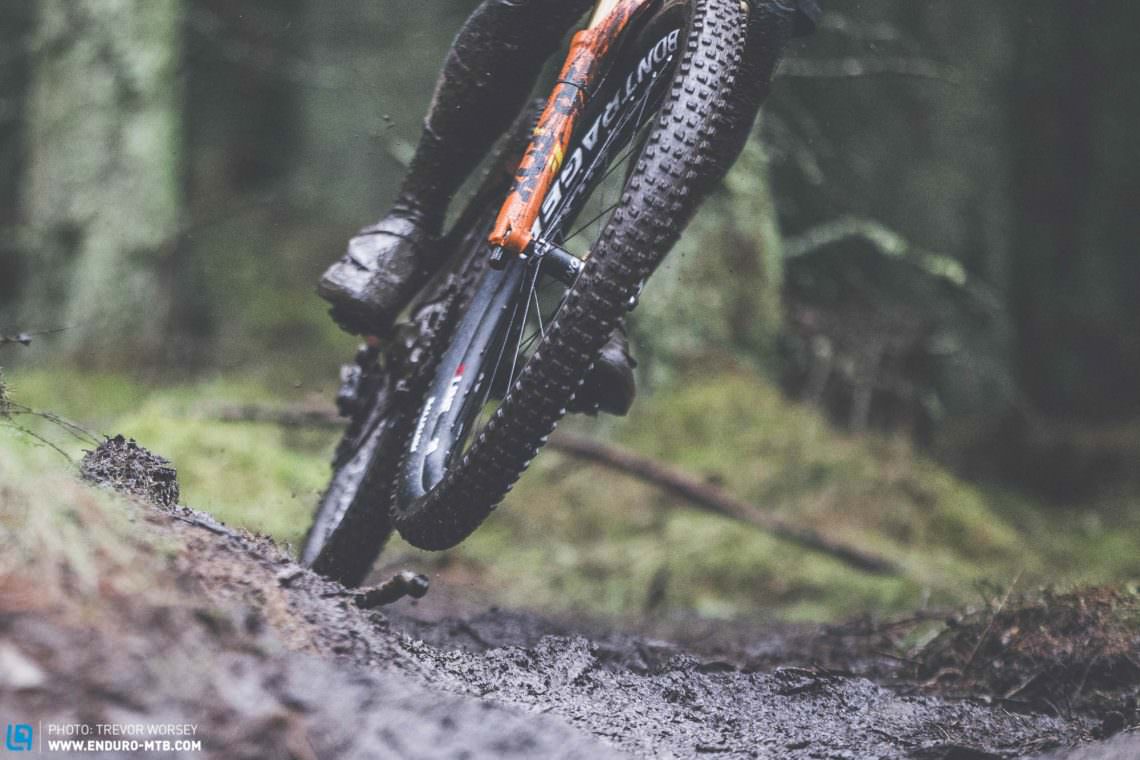
Prototype Bontrager Team Issue 29 Tires
Boasting the same compound as the current tire, the width has been pushed wider for a bigger contact patch. While still a prototype they are in a production mould, so we will see them soon. The initial run is confined to a few samples given to the team riders. “The feedback was phenomenal from the athletes” Ray enthuses. Trek are aiming the tire more at recreational riders, but after Lewis’s enthusiasm, we may see them at an EWS.
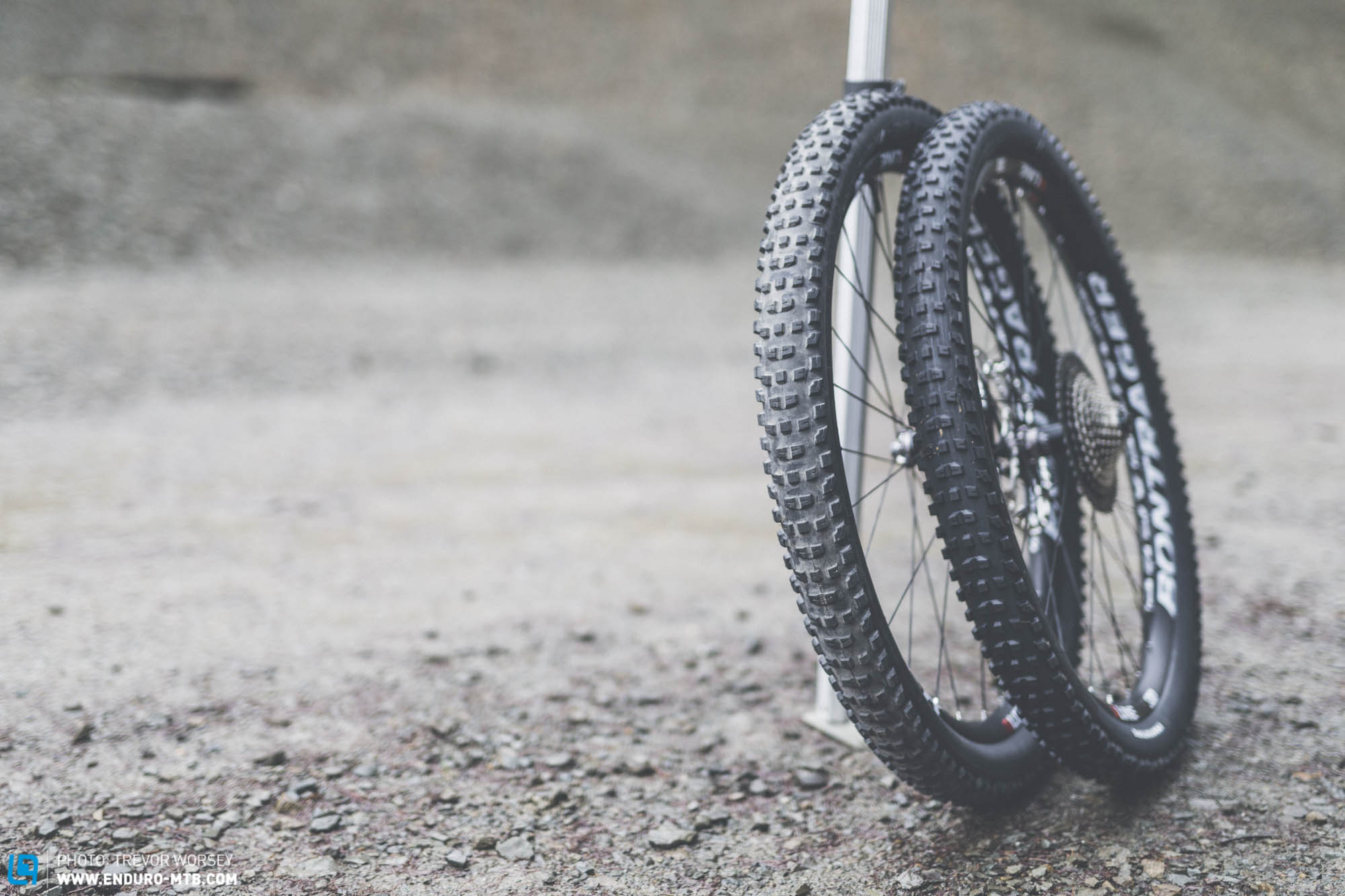
New Bontrager Line Elite 30 Rims
To provide a more secure hold on the bigger tire, Trek have revised the Line Elite 30 rims, widening the internal width to 30 mm for added support and control. The hook has been lowered, to minimise the chance of hook damage in impacts, ensuring that the rider can finish up the race if they have an issue.

Flat Tire Defender
Foam tire inserts are hot property right now, and Trek have been working on their Flat Tire Defender for some time now. Early developments carried some serious weight, but the latest version feels light and durable. The FTD allows riders to run a lower pressure, pushing the tire onto the rim and trapping the bead if there is a big flat, allowing the racer to finish the stage without totalling the rim.
Data, it’s all about the numbers
Gone are the days where success or failure was measured by a simple stopwatch alone, data is everything and there is now a bewildering array of analysis tools at an engineer’s disposal. Hidden inside Ray’s toolkit, between the digital shock pumps and Nipex’s was some amazing technology, some of which we can talk about, some of which we cannot. However, the blinking unit on top of Lewis’s helmet caught our attention straight away. Sometimes when you are fast you feel slow, and vice versa, but for Lewis there would be no hiding.


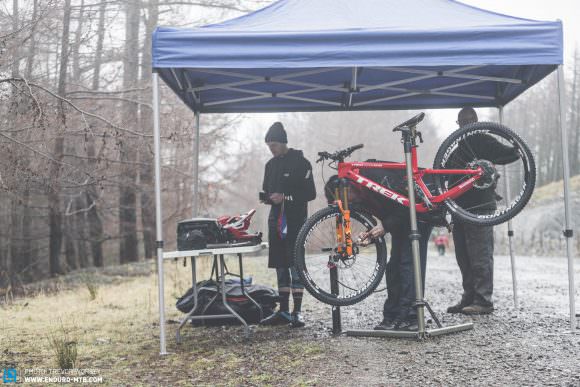

The matchbox sized box of voodoo was a LITpro, like a GPS device only much more accurate, pulling signals from up to 11 satellites simultaneously, 20 times a second. The device provides a position fix that’s almost accurate enough to show line choice. Inside the black box lies a brace of accelerometers, silently logging G-forces and speeds, a nerd’s dream. The data is overlaid over a google map, and replayed, run against run, to show where and why the rider was fast or slow, tiny choices or improvements in performance can be clearly seen and changes can be made in real time.
Lewis’s Suspension Settings at a glance
Currently, we can neither confirm nor deny anything about the internals of Lewis’s fork and shock, but we can give you the settings that, weighing in at 76 kg, he uses.
- Tire pressures: 22.6 psi front, 26 psi rear.
- FOX X2 Shock: 190 psi, 18 Clicks HSR, 11 Clicks LSR, 5 Clicks LSC, 18 Clicks HSC
- FOX 36 Factory Fork: 75 psi, 15 Clicks LSC, 1 Click HSC, 8 Clicks Rebound
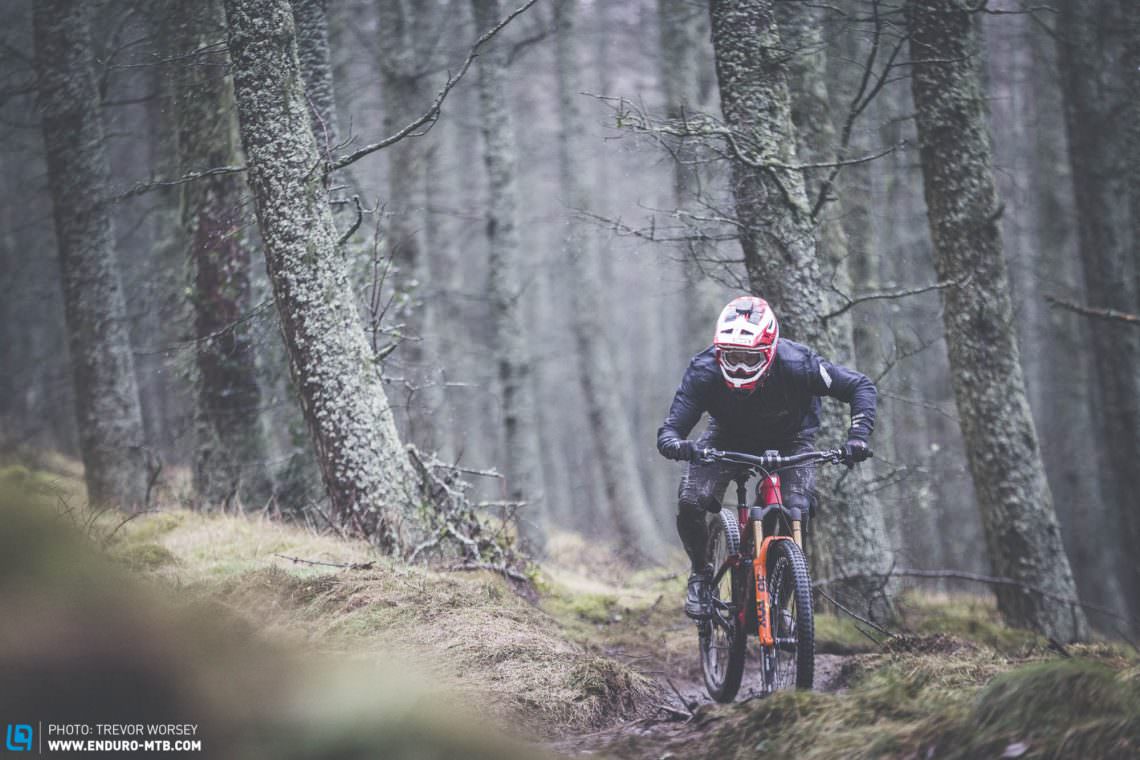
Of course, all the technology in the world will not help if you are riding different lines again and again, but that’s where the elites racer’s excel. After some sighting runs, Lewis’s lap times were incredibly consistent, within seconds, hitting the same lines again and again like a seasoned F1 driver. Once up to speed the tuning began, one click of HSC here, one drop of 5 psi there, lap after lap feedback was given, changes were made and the times started to fall.
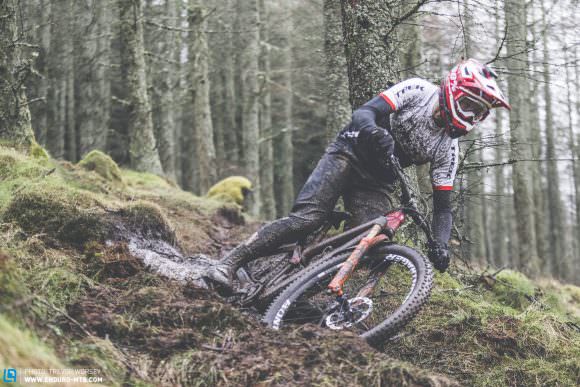
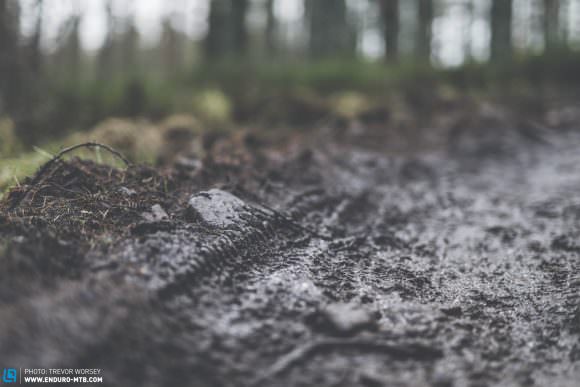
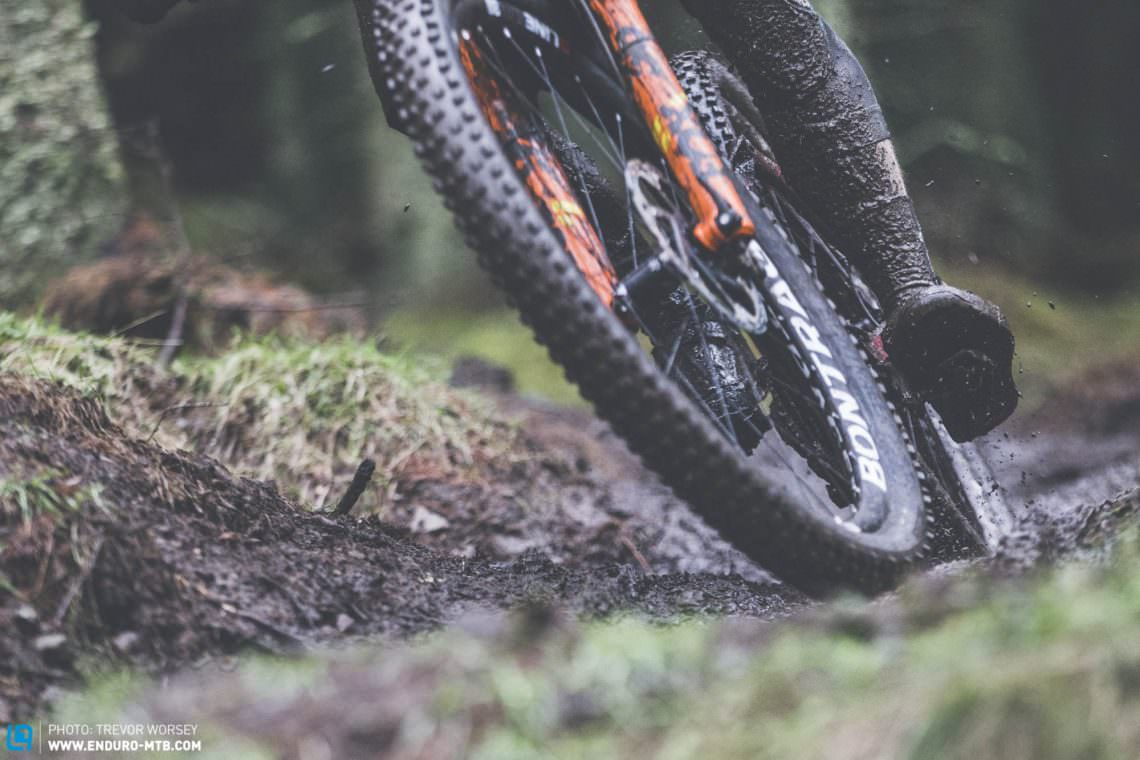
Not love at first sight
Switching from 2.3 to the new wider tires was, admittedly, not an instant hit. On the fire road it was clear that Lewis was unsure of the voluminous carcases, filling out the Trek Slash’s arches like a stanced V-dub. However, after three muddy runs on bigger rubber the times were tumbling, “I have never ridden tires that wide so I had no idea what to expect. I noticed straight away the different sound of the tires on the dirt, but felt more stability and a more stable front end.” It was interesting to watch the process, Lewis would finish a run and feedback to Ray, who would then make small changes, tiny steps, but each time resulting in marginal gains.
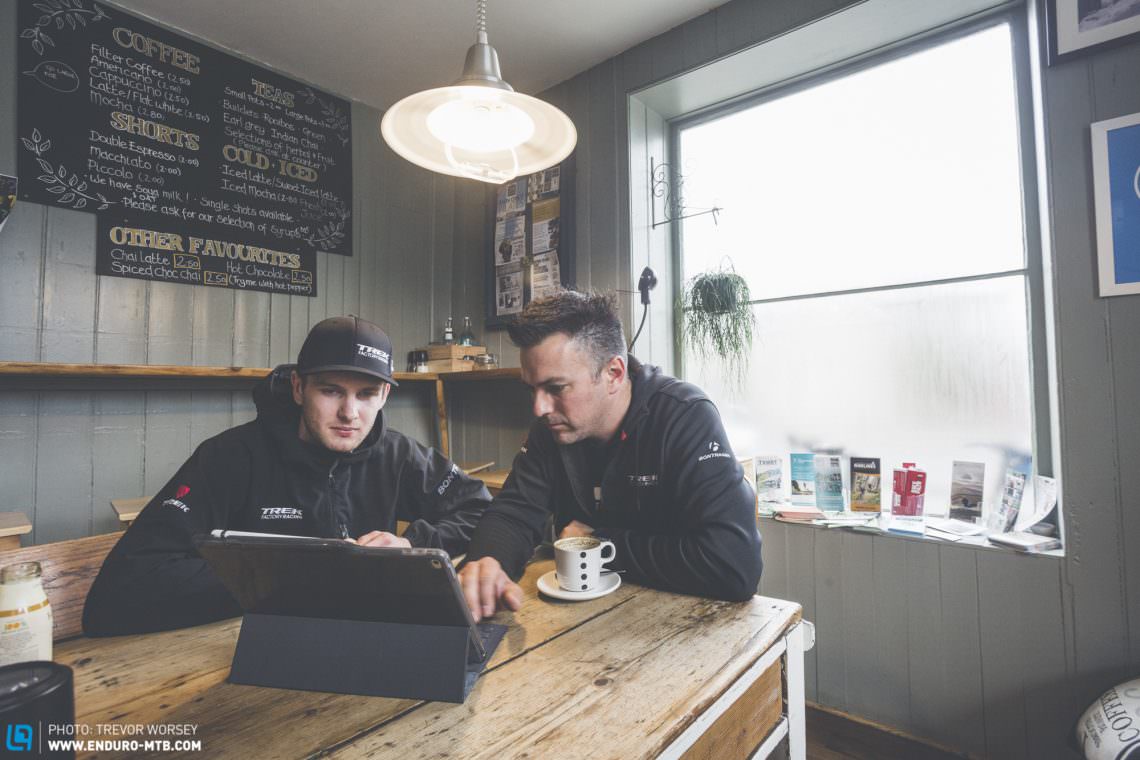
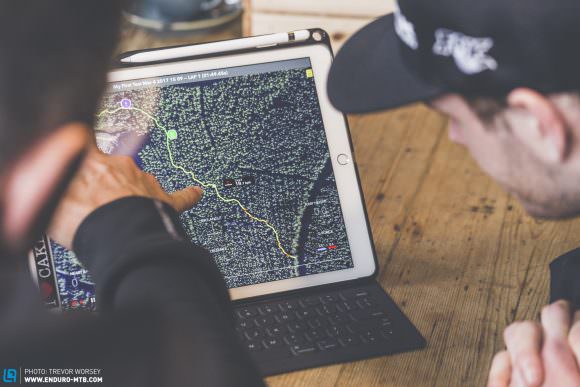

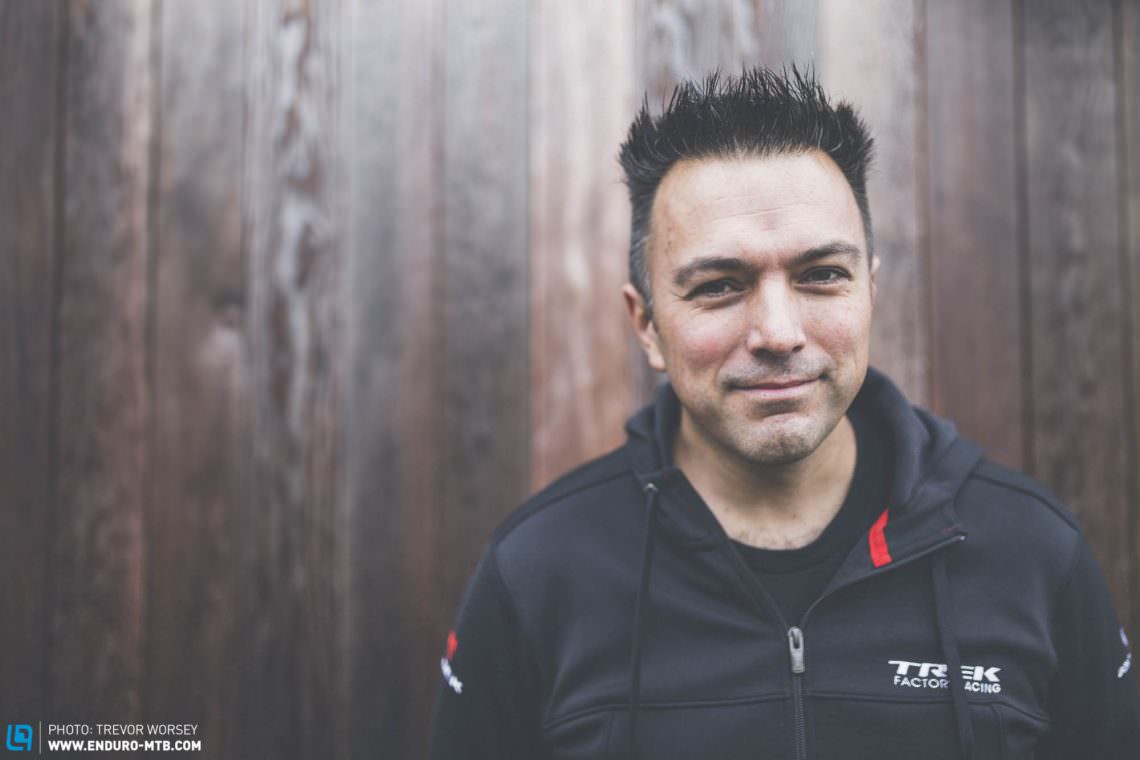
Tire pressures continued to drop throughout the testing, but then so did the times. Looking over the results in the cafe, it was clear that the session had been very beneficial for both Lewis and Ray. LITpro had shown that Lewis had shaved some time off his runs “The FOX36 fork that was originally fitted was the same fork that I ran last year and I was really comfortable on the setup. I was told that the new fork uses a different oil and would feel completely different so I was a little nervous. A couple of runs in it felt really good, and I was really happy with the increased sensitivity and smoothness. It still needs to be run-in but I am super happy so far. We now have a nice setup that, for the same effort, allowed me to run quicker.” Ray left the session with some great feedback on the new tires with reams of performance analysis at a range of different pressures.
And then there was some amazing secret stuff that……….Ah, Ray has told me to shut up.
Did you enjoy this article? If so, we would be stoked if you decide to support us with a monthly contribution. By becoming a supporter of ENDURO, you will help secure a sustainable future for high-quality mountain bike journalism. Click here to learn more.
Words & Photos:




